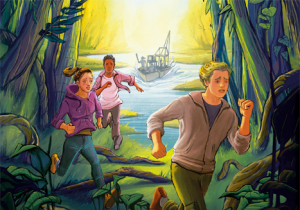
Mozart: Music primary resource
Learn about Wolfgang Amadeus Mozart’s life, works and legacy
This Music primary resource introduces children to composer Wolfgang Amadeus Mozart. Discover the musician’s development over his lifetime. At what age did Mozart learn to play the harpsichord? What was the name of his first opera? How many musical pieces did Mozart compose in his lifetime?
Pupils will learn about Wolfgang Amadeus Mozart’s life and works, and the influence they have had on modern day music our National Geographic Kids’ Mozart primary resource sheet.
The teaching resource can be used in study group tasks for looking at the significance and influence of Mozart’s work. It can also be used as a printed handout for each pupil to review and annotate, or for display on the interactive whiteboard for class discussion.
Activity: Ask children to listen to a piece of music composed by Mozart and discuss their opinions as a class. What did they like? What didn’t they like? What kinds of instruments can they identify in the piece? They could compare the piece they have listened to with an extract from another of Mozart’s famous symphonies and write down which they prefer, giving reasons for their answers. Alternatively, they could compare Mozart’s style to another famous composer (e.g. Ludwig van Beethoven). Whose style do they find most interesting? Why?
N.B. The following information for mapping the resource documents to the school curriculum is specifically tailored to the English National Curriculum and Scottish Curriculum for Excellence. We are currently working to bring specifically tailored curriculum resource links for our other territories; including South Africa, Australia and New Zealand. If you have any queries about our upcoming curriculum resource links, please email: schools@ngkids.co.uk
This Mozart primary resource assists with teaching the following Key Stage 2 Music objective from the National Curriculum:
Pupils should be taught:
- improvise and compose music for a range of purposes using the inter-related dimensions of music
- appreciate and understand a wide range of high-quality live and recorded music drawn from different traditions and from great composers and musicians
- develop an understanding of the history of music
This Mozart primary resource assists with teaching the following Expressive arts First – Second level objectives from the Scottish Curriculum for Excellence:
- I have listened to a range of music and can respond by discussing my thoughts and feelings. I can give and accept constructive comment on my own and others’ work.
Scottish Curriculum for Excellence Third level Expressive arts objectives:
- I have listened to a range of music and can identify features and concepts. I can give constructive comments on my own and others’ work, including the work of professionals.
Scottish Curriculum for Excellence Fourth level Expressive arts objectives:
- Having reflected on my personal experiences, including participation and engagement with professionals, I can listen to a wide range of music and identify and analyse technical aspects, make informed judgments and express personal opinions on my own and others’ work.
Download primary resource
More Like

Cloudburst!

St Lucia facts!

15 fascinating facts about Sir David Attenborough









LEAVE A COMMENT
THANK YOU
Your comment will be checked and approved shortly.
WELL DONE,
YOUR COMMENT
HAS BEEN ADDED!
COMMENTS
Lets take action
CUSTOMIZE YOUR AVATAR